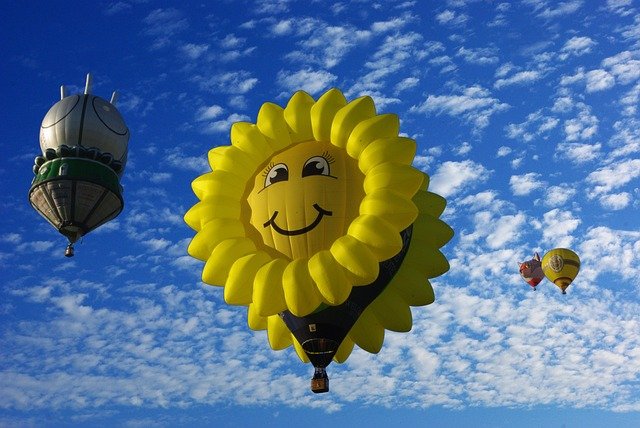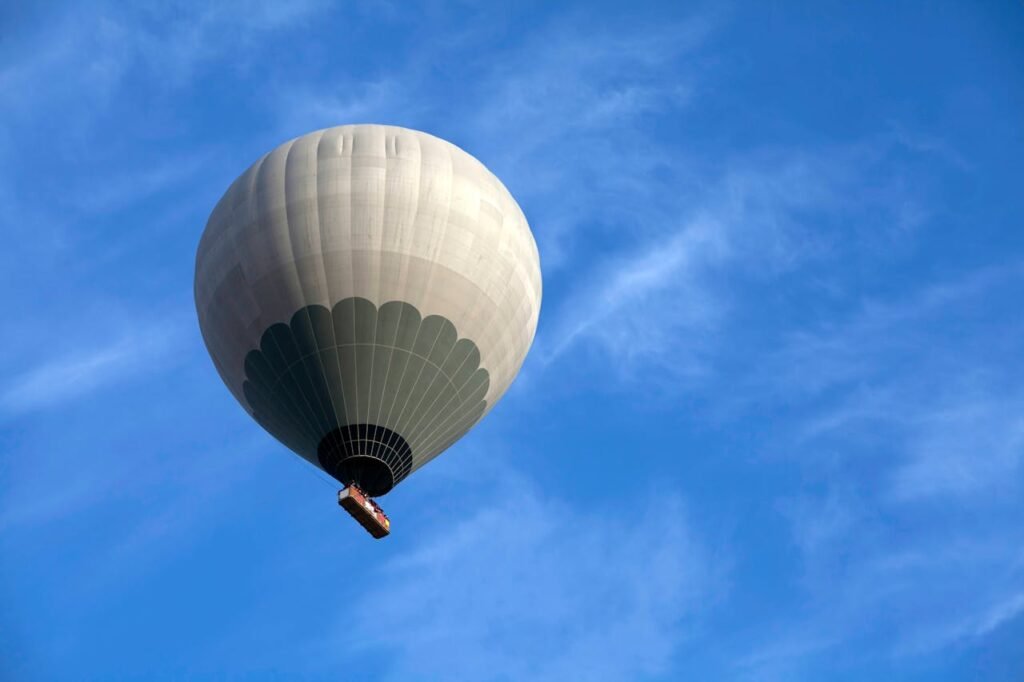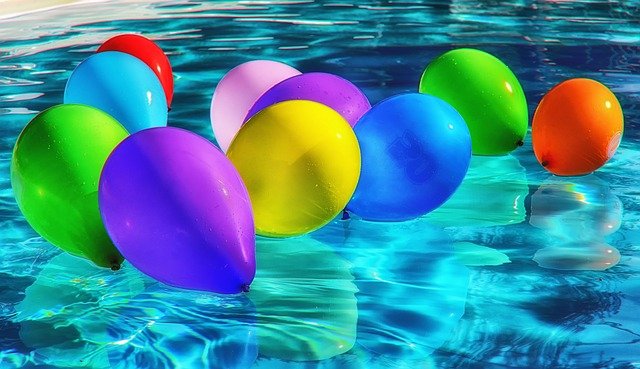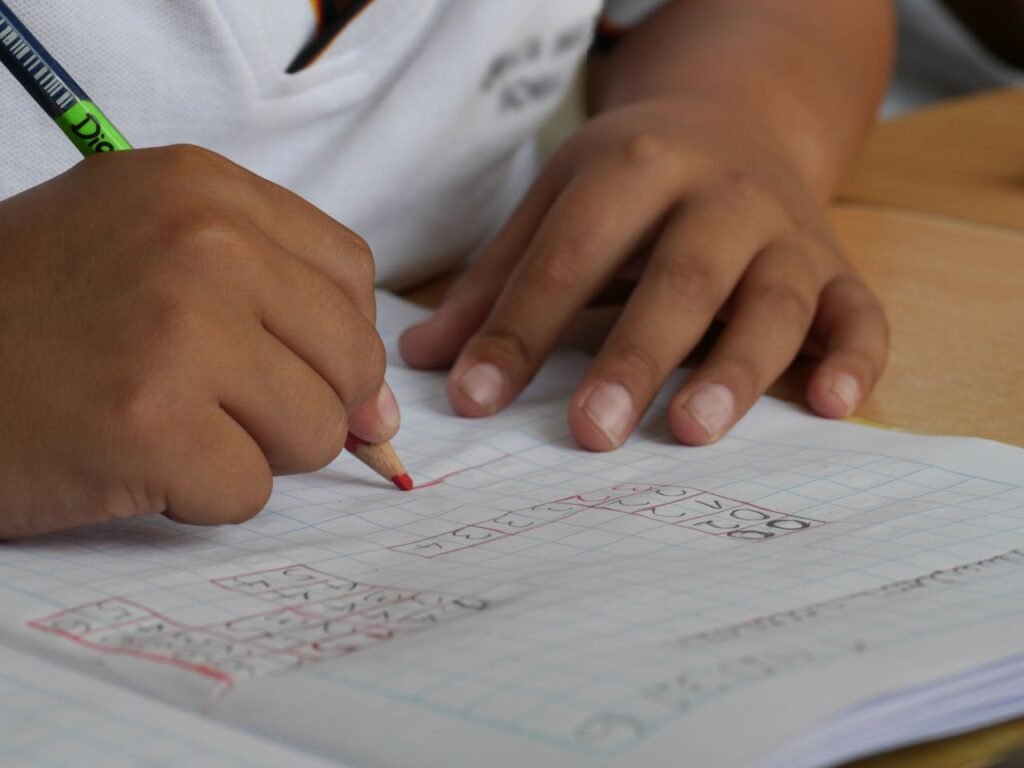Balloons aren’t just for parties — they’re tiny science labs you can hold in your hand. With a single balloon, you can explore how air moves, how pressure works, and even how energy can make things fly across the room.
When you blow air into a balloon, you’re not just filling it up — you’re storing energy. When you let go, that energy is released, and the balloon zooms away. This is physics in action, right in your living room.
In this article, we’ll explore the science hiding inside balloons. We’ll look at how they stretch, why they pop, how they can lift things, and how you can use them to understand some of the most important ideas in physics. You don’t need expensive lab equipment — just curiosity, a balloon or two, and a little space to play.
Air Inside a Balloon – What’s Really Happening?
When you take a deep breath and blow into a balloon, you’re doing something amazing. You’re pushing thousands of tiny air particles into a small space. Air is made up of gases, mostly nitrogen and oxygen. These gases are made of molecules — tiny particles that are always moving, bumping into each other, and bouncing off surfaces.
A balloon is made of stretchy material, usually latex or rubber. When you add air inside, the moving molecules push against the inside walls of the balloon. This pushing force is called air pressure.
Why the Balloon Gets Bigger
The more air you blow in, the more molecules you squeeze inside. They bump into the balloon walls harder and more often. This makes the balloon stretch. If you keep blowing, it gets bigger and bigger — until the pressure inside becomes too much for the rubber to handle, and POP!
Pressure Is Everywhere
What’s interesting is that air pressure isn’t just inside the balloon — it’s outside too. The air around us is always pressing down because of the weight of Earth’s atmosphere. We don’t notice it because it’s balanced.
In a balloon, though, the pressure inside becomes much greater than the pressure outside. This difference is what makes the balloon tight and round.
The Energy You Store in a Balloon
When you blow up a balloon, you’re not just filling it with air — you’re storing potential energy. This is energy that’s ready to be released. The stretched rubber also stores energy, a bit like a stretched rubber band.
When you let go of the balloon without tying it, the air rushes out. The balloon zooms around because the escaping air pushes back against the balloon walls. This is Newton’s Third Law of Motion — for every action, there’s an equal and opposite reaction. The air goes one way, and the balloon moves the other way.
A Quick At-Home Test
If you want to see pressure in action, try this:
- Blow up a balloon and pinch the end closed.
- Press gently on the sides — you’ll feel the air push back.
- Release your pinch and watch how fast the air escapes.
That escaping air is moving quickly because of the difference between the high pressure inside the balloon and the lower pressure outside.
Balloon Experiments That Show Air Pressure

Balloons are amazing because they make invisible forces visible. Air pressure is all around us, pressing in every direction, but we can’t see it. Balloons let us “trap” that air and see what it can do. With just a balloon and some simple items from home, you can turn your kitchen or living room into a science lab.
1. The Balloon Rocket — Flying on Air
If you’ve ever let go of a balloon without tying it, you know how it zips around the room. This experiment takes that wild energy and gives it a clear path.
You’ll need:
- A balloon (longer ones work best, but any will do)
- A long piece of smooth string (2–3 meters is great)
- A plastic drinking straw
- Tape
- Two chairs or sturdy objects to tie the string to
Steps:
- Thread the string through the straw.
- Tie the string between the two chairs so it’s pulled tight like a clothesline.
- Blow up the balloon but don’t tie it shut — just pinch the opening closed.
- Tape the balloon to the straw so it’s facing along the string.
- Let go and watch it zoom!
What’s happening: When you release the balloon, air rushes out the back. That escaping air pushes the balloon forward along the string. This is Newton’s Third Law in action: every action (air rushing out) has an equal and opposite reaction (balloon moving forward).
2. Balloon in a Bottle — The Power of Trapped Air
At first, this one feels impossible — until you learn why.
You’ll need:
- A balloon
- An empty plastic bottle
- A pin or push needle (optional)
Steps:
- Push the balloon inside the bottle and stretch its neck over the bottle’s opening.
- Try blowing it up. You’ll find it’s almost impossible.
- Now, use the pin to poke a small hole near the bottom of the bottle.
- Try blowing up the balloon again — it works!
What’s happening: The first time, the air inside the bottle had nowhere to go, so it pushed back against the air you were trying to blow in. Once you made a hole, that trapped air could escape, making room for the balloon to inflate. This is a simple way to show that air takes up space and pushes back.
3. The Hovering Balloon — Floating Without Strings
This one feels like magic, but it’s pure physics.
You’ll need:
- A balloon
- A hair dryer
Steps:
- Blow up the balloon and tie it.
- Turn the hair dryer on to its highest air setting.
- Hold the balloon above the stream of air and slowly let go.
What’s happening: The fast-moving air from the hair dryer lowers the air pressure directly under the balloon. The higher pressure from the surrounding air keeps pushing inward, balancing the balloon in place. This is called the Bernoulli Principle.
In each of these experiments, you’re not just watching a balloon do something fun — you’re seeing air pressure in action. It’s a reminder that even though we can’t see air, it’s powerful, it’s everywhere, and it’s always moving.
How Balloons Store Energy and Why They Pop

When you blow up a balloon, you’re doing more than just filling it with air — you’re loading it with energy, ready to be released. This energy hides in two places: in the air inside and in the stretched skin of the balloon itself.
Air Pressure as Stored Energy
The air you blow in is made up of billions of tiny molecules moving around quickly. Inside the balloon, these molecules bounce off the walls, pushing outward. The more air you add, the higher the pressure gets. That pressure is energy, just waiting to escape.
When you let go of the balloon’s neck, the high-pressure air rushes out into the lower-pressure air around it. The escaping air pushes the balloon in the opposite direction — that’s why it flies around the room in loops and spins.
Elastic Energy in the Rubber
A balloon’s skin is made of latex or rubber, which can stretch a lot. When you blow it up, the rubber molecules get pulled apart and stretched like tiny springs. These stretched molecules store elastic potential energy.
If you let the air out slowly, the rubber relaxes gently. But if you pop the balloon, that stored energy is released in an instant, snapping the rubber back at high speed — and making that loud BANG!
Why Balloons Pop
A balloon will pop when the pressure inside is greater than the strength of the rubber holding it together. This can happen in a few ways:
- Overinflating: Too much air increases the internal pressure until the rubber can’t stretch anymore.
- Weak spots: Tiny scratches or thin areas in the balloon make it easier for the rubber to tear.
- Sharp objects: A pin or toothpick creates a sudden weak point, causing the rubber to rip quickly.
A Fun Popping Experiment
You can actually push a sharpened stick through a balloon without popping it if you know the trick. The thickest parts of a balloon — the top and bottom near the tied end — can stretch around a smooth object without tearing. This is because the latex isn’t as stretched there, so the molecules are still close together and strong.
By using a little cooking oil or petroleum jelly to make the stick slippery, you can push it in slowly and pull it out without a bang. This shows how even with high pressure inside, the balloon won’t pop unless the rubber tears suddenly.
Balloon Physics in Real Life

Balloons may seem like simple toys, but the science inside them is the same science behind rockets, weather systems, and even how your own body works. Once you understand how balloons store and release air, you can see those same forces everywhere.
Rockets and Space Travel
When you release a balloon and it zooms around the room, you’re seeing the same principle that sends rockets into space — Newton’s Third Law of Motion.
In a rocket, burning fuel creates hot gases. These gases shoot out of the rocket’s engines at high speed. The force of the gases rushing out pushes the rocket upward in the opposite direction. The balloon works the same way — just with air instead of fiery exhaust.
NASA scientists use this same idea, but on a much bigger and more controlled scale. That means when you play with a balloon rocket, you’re experimenting with real rocket science.
Weather and Air Pressure
Air pressure is a big part of how weather works. High-pressure areas often bring clear skies, while low-pressure areas can lead to clouds and rain.
When you blow up a balloon, you create a little “high-pressure zone” inside. If you’ve done the “balloon in a bottle” experiment, you’ve seen what happens when air can’t escape — it resists change. The atmosphere around Earth behaves the same way, just on a massive scale.
Meteorologists (weather scientists) use air pressure readings to predict storms, wind patterns, and temperature changes. The same physics that keeps a balloon round helps explain why hurricanes spin and how wind moves across the globe.
How Your Lungs Work
Your lungs are basically flexible balloons inside your chest. When you breathe in, your diaphragm muscle moves downward, making more space in your chest cavity. This lowers the air pressure inside your lungs, so outside air rushes in to fill them.
When you breathe out, your diaphragm moves up, squeezing your lungs and increasing the pressure inside, pushing air out. This is why inflating a balloon feels a little like blowing up a second pair of lungs — you’re using your body’s own air pressure system to fill it.
Airbags and Safety
Cars use air pressure for safety too. In an accident, airbags inflate in less than a second using gas from a chemical reaction. This rapid inflation works the same way as blowing up a balloon very quickly — air pressure fills a space and cushions what’s inside.
Balloon physics isn’t just for playtime — it’s part of transportation, weather, biology, and safety. Understanding these connections makes the world feel more understandable and exciting.
Fun Balloon Energy Challenges for Kids

Science is not just something you read in a book — it’s something you do. Balloons make it easy to turn your home into a mini physics lab. The best part? You don’t need special equipment, just curiosity and a willingness to experiment. Here are some balloon challenges that not only make kids giggle but also teach them how air, pressure, and energy work.
1. The Balloon Car Challenge – Racing with Air Power
Imagine building a car without a motor, battery, or fuel — just a balloon.
You’ll need:
- 1 balloon (long ones work best, but any will do)
- 4 bottle caps (wheels)
- 2 straight straws (axles)
- 1 flexible straw (air nozzle)
- A piece of cardboard or thick paper (car body)
- Tape
How to do it:
- Push the straight straws through the car body to make the axles.
- Attach the bottle caps to the ends for wheels. Make sure they spin freely.
- Tape the flexible straw to the balloon’s neck so you can blow it up without touching the balloon directly.
- Secure the balloon on top of the car, with the straw pointing toward the back.
- Blow it up through the straw, pinch it, set the car down, and let go.
Why it works: When the air rushes out of the balloon, it pushes the car forward. By changing the balloon size, straw length, or car weight, kids can test how design affects speed and distance.
2. Balloon Hover Race – Floating to the Finish
Instead of racing on the ground, this challenge takes to the air.
You’ll need:
- 1 balloon per player
- A clear space indoors or outdoors
How to do it:
- Blow up your balloon and tie it.
- Release it and try to keep it in the air by blowing underneath it as you walk (or run) toward the finish line.
- The rule: you can’t touch the balloon with your hands — only your breath.
Why it works: Your breath pushes upward, creating a cushion of air under the balloon. This is a mini version of how hovercrafts and air hockey tables work.
3. The Balloon Lift Test – How Much Can It Carry?
Balloons can lift more than you think — but how much exactly?
You’ll need:
- Balloons
- Paperclips or coins
- Tape
- String
How to do it:
- Blow up the balloon and tie it.
- Tape one end of the string to the balloon.
- Use tape to attach paperclips or coins to the other end of the string, one by one.
- Keep adding weight until the balloon can’t hold it off the ground anymore.
Why it works: Air inside the balloon has weight. A regular air-filled balloon won’t float like helium, but it can still create lift when you pull upward. This lets kids compare air-filled balloons with helium balloons and learn about buoyancy.
4. Balloon Obstacle Course – Wind-Powered Navigation
This one turns balloon control into a game of skill.
You’ll need:
- A blown-up balloon
- Household items to make an obstacle course (chairs, pillows, boxes, broomsticks)
How to do it:
- Create a path with twists and turns using your household objects.
- Place the balloon at the start line.
- The rule: move the balloon only by blowing at it — no hands allowed.
Why it works: You’re using moving air to push and steer the balloon. The challenge is in controlling the direction and speed, just like wind pushes objects in nature.
These balloon challenges do more than entertain — they invite kids to ask questions like:
- “What happens if I make the balloon bigger?”
- “Will a heavier car go farther or shorter?”
- “How can I blow without losing control?”
Those questions are exactly what real scientists ask — and that’s where the magic of learning happens.
How Debsie Makes Learning Physics with Balloons Even Better

At Debsie, we know that kids learn best when they’re having fun. A balloon might seem like just a toy, but in the hands of a curious child — and with the right guidance — it becomes a tool for exploring some of the biggest ideas in science.
From Play to Discovery
In a Debsie physics class, a balloon experiment doesn’t stop at “Wow, that’s cool!” Our teachers help students ask the right follow-up questions:
- Why did the balloon move faster when it was bigger?
- What would happen if we used two balloons instead of one?
- How does this experiment connect to real rockets or weather patterns?
This guided curiosity turns quick fun into long-term understanding.
Hands-On and Minds-On
We encourage kids to build, test, measure, and adjust. They don’t just watch an experiment — they design their own. For example:
- In a Balloon Car Challenge, students might try different wheel sizes, balloon shapes, and straw lengths, then compare results.
- In Air Pressure Tricks, they might test bottle shapes or hole sizes to see how trapped air behaves.
These activities build problem-solving skills and scientific thinking without kids even realizing they’re learning formal physics principles.
Connecting to the Bigger Picture
Our lessons link balloon experiments to the real world:
- The balloon rocket becomes a lesson on space travel and Newton’s Laws.
- A hovering balloon connects to how airplanes stay in the air.
- A popping balloon opens a discussion on material strength and safety gear.
By making these connections, students see that science isn’t just “schoolwork” — it’s everywhere around them.
Confidence Through Creation
Every time a student builds something that works — even if it’s just a balloon car that rolls a few centimeters — they gain confidence. They start to believe they can understand and use science. That confidence carries into other subjects, from math to engineering.
Global Community of Young Scientists
Debsie students aren’t learning alone. They share their balloon designs, compare experiment results, and cheer each other on in our global classroom. This collaboration helps kids see that learning is more exciting when ideas are shared.
In the end, a balloon in a Debsie class is never just a balloon. It’s a launchpad for curiosity, creativity, and real scientific thinking — all wrapped in fun.
Conclusion
A balloon may look like a simple, colorful toy — but inside it lives the science of air, pressure, and energy. Every time a child blows one up, they’re learning about the invisible forces that shape our world. Every time they race a balloon rocket, hover one in mid-air, or pop one with a pin, they’re touching real physics concepts — Newton’s laws, air pressure differences, elasticity — without even realizing it.
These hands-on moments matter. They spark curiosity, encourage problem-solving, and help kids see science as something they do, not just something they read about. And when children learn through play, they remember it for life.
At Debsie, we believe the best way to grow a scientist is to grow their sense of wonder. That’s why our lessons turn everyday objects — like balloons — into powerful teaching tools. We guide kids to ask questions, try ideas, and explore connections to the real world.
🎈 The world is full of science waiting to be discovered. Give your child the joy of exploring it with expert teachers, a global community, and fun lessons they’ll never forget.
Sign up today for a free trial class at Debsie.com — and watch your child’s learning take off, just like a balloon rocket.
Read next:



